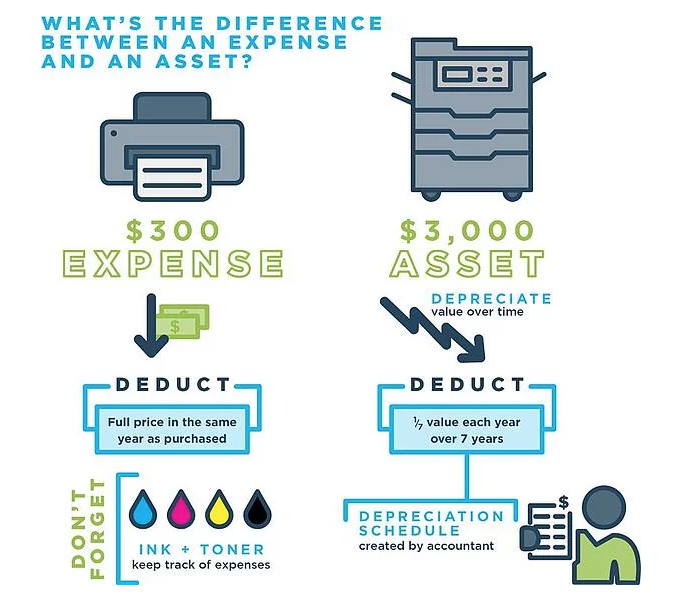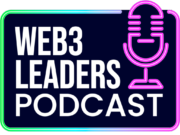
Harvard Business School Online’s Business Insights Blog provides the career insights you need to achieve your goals and gain confidence in your business skills. In other states, the program is sponsored by Community Federal Savings Bank, to which we’re a service provider. You’ll get bank details for the US, UK, euro area, Poland, Australia and New Zealand, to receive fee-free payments from these regions. Hold 40+ different currencies, and switch between them using the mid-market exchange rate — and up to 3x cheaper than an alternative like PayPal.
Based on its results, it can also provide you key insights to make important financial decisions. A company’s balance sheet is one of the most important financial statements it produces—typically on a quarterly or even monthly basis (depending on the frequency of reporting). Employees usually prefer knowing their jobs are secure and that the company they are working for is in good health. Shareholder equity is the money attributable to the owners of a business or its shareholders. It is also known as net assets since it is equivalent to the total assets of a company minus its liabilities or the debt it owes to non-shareholders. When completing your taxes or providing financial information to regulatory authorities.
A balance sheet also serves as a company or organization’s financial position over specified time, such as daily, monthly, quarterly, or yearly. When it comes to evaluating a company’s financial wellbeing, there are different types of financial statements to look at. A balance sheet is just one type of statement and differs a bit from a profit and loss statement (P&L), which is another commonly used financial report used in evaluating a business’ finances.
Example of a balance sheet
Next, you’ll follow the same process to calculate current and long-term liabilities. Items such as accounts payable are considered current liabilities, while notes payable or bank loans are considered long-term liabilities. A balance sheet is a comprehensive financial statement that gives a snapshot of a company’s financial standing at a particular moment. A balance sheet covers a company’s assets as defined by its liabilities and shareholder equity. This category is usually called “owner’s equity” for sole proprietorships and “stockholders’ equity” or “shareholders’ equity” for corporations.
As with assets, liabilities can be classified as either current liabilities or non-current liabilities. An asset is anything a company owns which holds some amount of quantifiable value, meaning that it could be liquidated and turned to cash. Make a copy of this balance sheet example and fill in your business details to create Sample balance sheet your own balance sheet in just a few simple steps. Integrate your Wise business account with Xero online accounting, and make it easier than ever to watch your company grow. Regardless of the size of a company or industry in which it operates, there are many benefits of reading, analyzing, and understanding its balance sheet.
Sample Income Statement
A company usually must provide a balance sheet to a lender in order to secure a business loan. A company must also usually provide a balance sheet to private investors when attempting to secure private equity funding. In both cases, the external party wants to assess the financial health of a company, the creditworthiness of the business, and whether the company will be able to repay its short-term debts.
If it’s publicly held, this calculation may become more complicated depending on the various types of stock issued. Whatever a business owns — its assets — have been financed by either taking on debt (liabilities), or through investments from the owner or shareholders (equity). Last, a balance sheet is subject to several areas of professional judgement that may materially impact the report. For example, accounts receivable must be continually assessed for impairment and adjusted to reflect potential uncollectible accounts. Without knowing which receivables a company is likely to actually receive, a company must make estimates and reflect their best guess as part of the balance sheet.
What Is a Balance Sheet and Why Does Your Business Need One? – Entrepreneur
What Is a Balance Sheet and Why Does Your Business Need One?.
Posted: Fri, 30 Dec 2022 08:00:00 GMT [source]
You can work through these steps to build your confidence and understanding for pulling together a basic balance sheet. Each step shows how each transaction affects the balance sheet and includes a sample of the balance sheet as it is updated. Armed with a better understanding of the value of the balance sheet and how to create one, you are now one step closer to better financial management. Instead of struggling with Excel, use our free balance sheet template to simplify the process. The balance sheet equity line may include more than meets the eye and can be an important metric for investors to review.
Supercharge your skills with Premium Templates
No balance sheet statement is complete (in my opinion) without an income statement to go along with it. A balance sheet template is a tool for tallying your assets and liabilities so that you can calculate your equity. Use a balance sheet template to ensure you have sufficient funds to meet and exceed your financial obligations. To complete your balance sheet template you’ll need to add in details about the debts and liabilities your company owes. Different industries, and therefore different companies, may have slight variations in reporting standards. Looking under the surface of these figures lets analysts and investors see how the business is doing financially, and compare one company to another.
Property, Plant, and Equipment (also known as PP&E) capture the company’s tangible fixed assets. Some companies will class out their PP&E by the different types of assets, such as Land, Building, and various types of Equipment. The main difference between the different layouts is in how the final totals are calculated – the individual accounts themselves do not change. A balance sheet is a financial document that you should work on calculating regularly. If there are discrepancies, that means you’re missing important information for putting together the balance sheet. As you can see, the report form is more conducive to reporting an additional column(s) of amounts.
Track your quarterly financial position by entering each month’s assets and liabilities and reviewing the monthly and quarterly perspectives of your owner’s equity. Monthly columns provide you with assets, liabilities, and equity tallies, and also reflect three-month figures for each quarter. This is the perfect template for short-term analysis of fiscal health but can be used for year-over-year monthly and quarterly comparisons. Designed with secondary or investment properties in mind, this comprehensive balance sheet template allows you to factor in all details relating to your investment property’s growth in value. You can easily factor in property costs, expenses, rental and taxable income, selling costs, and capital gains. Also factor in assumptions, such as years you plan to stay invested in the property, and actual or projected value increase.
What are liabilities on a balance sheet?
Net income is the final calculation included on the income statement, showing how much profit or loss the business generated during the reporting period. Once you’ve prepared your income statement, you can use the net income figure to start creating your balance sheet. We’ve compiled a collection of the most helpful free small business balance sheet templates for small business owners, accountants, and other stakeholders. Equity represents the amount of money that you or your investors have invested in the business. Also called capital, the equity account represents a company’s net worth.
- This printable template includes total calculations of cash receipts, costs of goods sold, operating expenses, and additional expenses.
- If splitting your payment into 2 transactions, a minimum payment of $350 is required for the first transaction.
- Your total assets and total liabilities are reflected in the Balance field.
- This form is more of a traditional report that is issued by companies.
The balance sheet only shows the financial position today compared to the same date last year. Still, it does not show the breakup of profits earned during the year, nor the cash revenues from different activities of the organization. Hence, the balance sheet analysis is incomplete when it did in isolation from the other statements.
Ensure that you meet your financial obligations and solvency goals with this easy-to-use monthly balance sheet template. Enter your assets — including cash, value of inventory, and short-term and long-term investments — as well as liabilities and owner’s equity. Completing the form will provide you with an accurate picture of your finances. This balance sheet also reports Apple’s liabilities and equity, each with its own section in the lower half of the report. The liabilities section is broken out similarly as the assets section, with current liabilities and non-current liabilities reporting balances by account.
I recommend reading up on the accounting equation first because it plays an important role in producing balance sheets which are derived using the double-entry bookkeeping method. It’s important to understand current vs. non-current liabilities because they affect your business differently and are listed separately on the balance sheet. As you can see, there are assets divided by current assets, including their subcategories, as well as non-current assets and their respective sub-categories. Below that, you can see current liabilities and non-current liabilities with their respective subcategories. “Beneath the assets are the Liabilities, the things the companies owes. This isn’t just debt such as loans or credit cards, but could also include unearned revenue,” notes Barbee. “Paired with the liabilities is the Shareholders’ Equity. All of the P&L statement, up until the date of the Balance Sheet, is actually housed in this portion as Retained Earnings.”
Related Templates
OnDeck has business financing that is tailored for today’s small businesses, with fast access to capital, a streamlined and efficient application process, and service customers rave about. Since 2007, OnDeck has delivered billions of dollars to customers in more than 700 different industries across the United States, Canada, and Australia. Your balance sheet helps you understand the relationship between your income and your expenses, so you can maintain profitability. This document will help you become a profit expert in your business because it will allow you to work with your business’ financial numbers to build a workable balance.
Delta Lithium Limited (ASX:DLI) Yinnetharra Initial Metallurgical … – MENAFN.COM
Delta Lithium Limited (ASX:DLI) Yinnetharra Initial Metallurgical ….
Posted: Mon, 21 Aug 2023 13:50:41 GMT [source]
This is whatever will remain if you subtract the liabilities of the company from the assets. Exactly how the equity is made up will vary from company to company, depending on the business type and stage. When you start a business, you’ll often need to finance it with your own money.
While they may seem similar, the current portion of long-term debt is specifically the portion due within this year of a piece of debt that has a maturity of more than one year. For example, if a company takes on a bank loan to be paid off in 5-years, this account will include the portion of that loan due in the next year. You can read my article on the accounting balance sheet which explains the meaning of the accounts and sections of a balance sheet. So for example, a P&L statement may be for Q4, a balance sheet may be for one single day at the end of a particular accounting period.
As an investor, you can review important financial statements from publicly traded companies through the Securities and Exchange Commission (SEC). There’s also the possibility of a horizontal presentation, where assets and liabilities and equity are side-by-side, read horizontally. In this case, on the right side you’ll see liabilities listed as well as the shareholders’ equity and on the left side, there are the assets listed. Unlike the asset and liability sections, the equity section changes depending on the type of entity.

